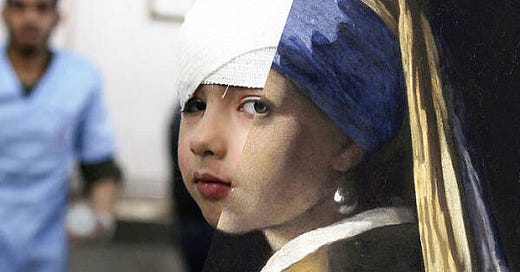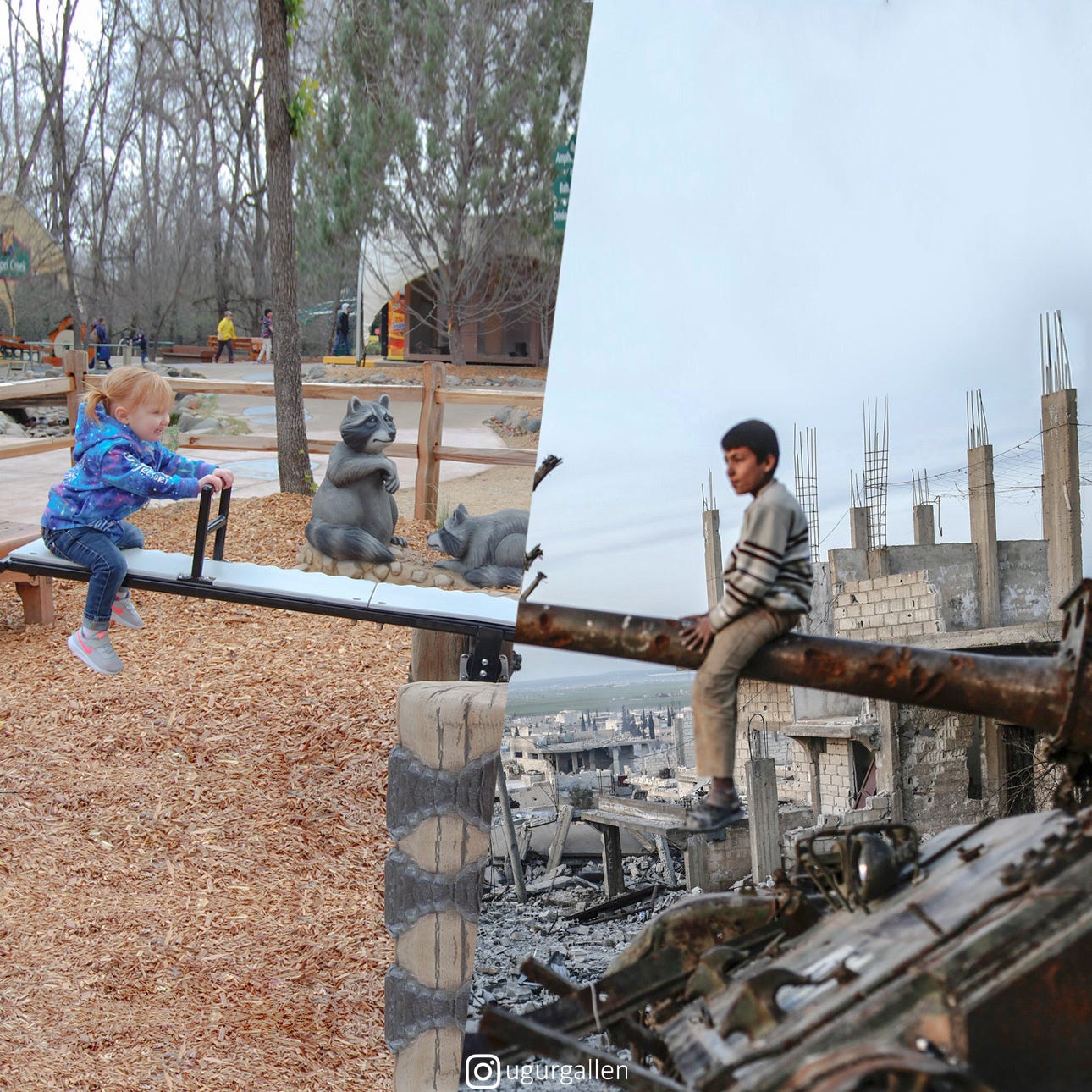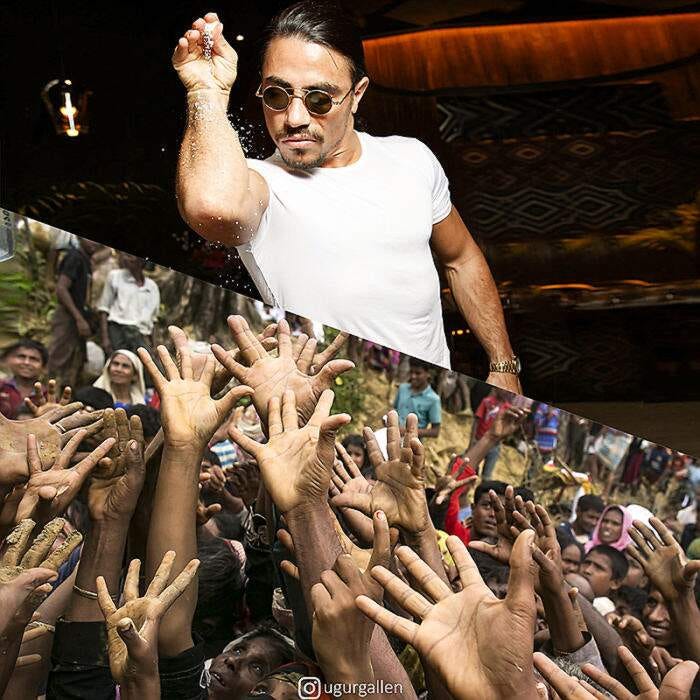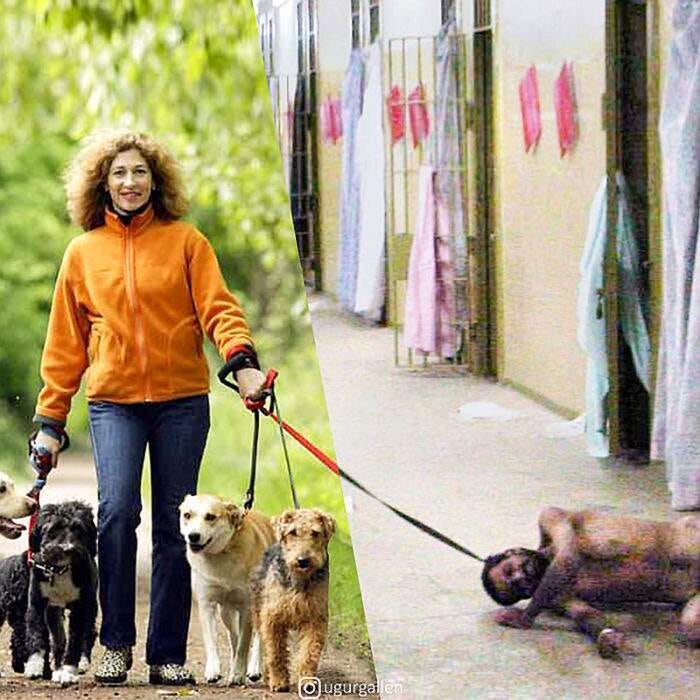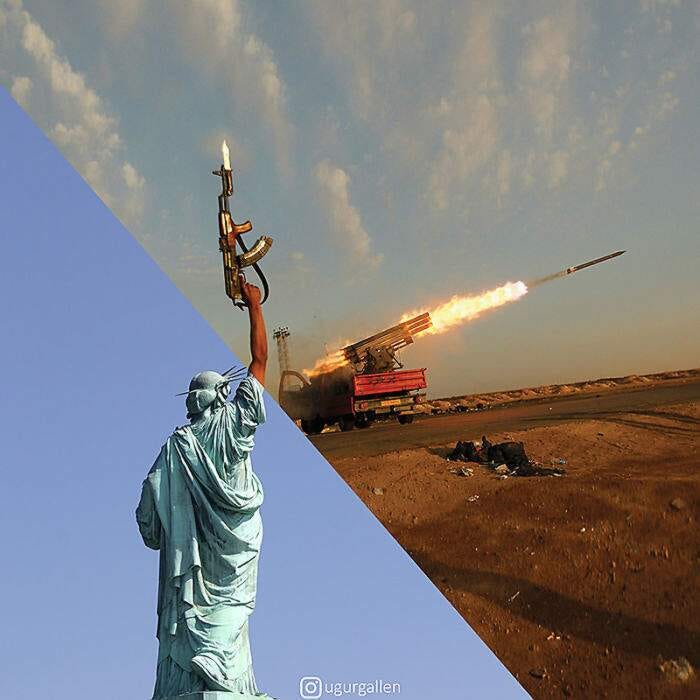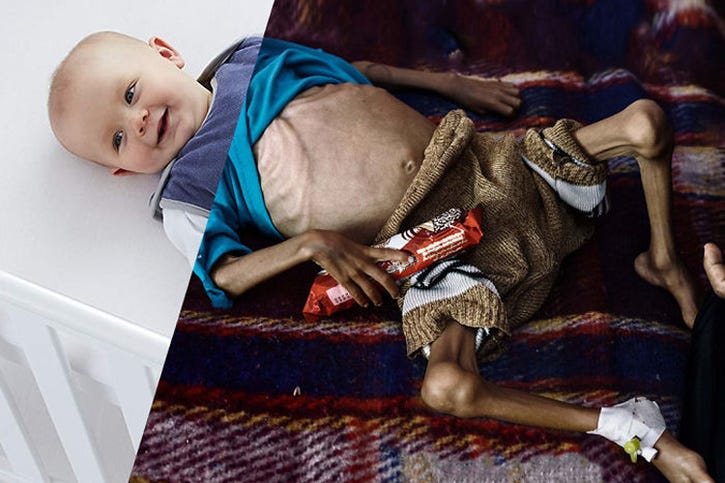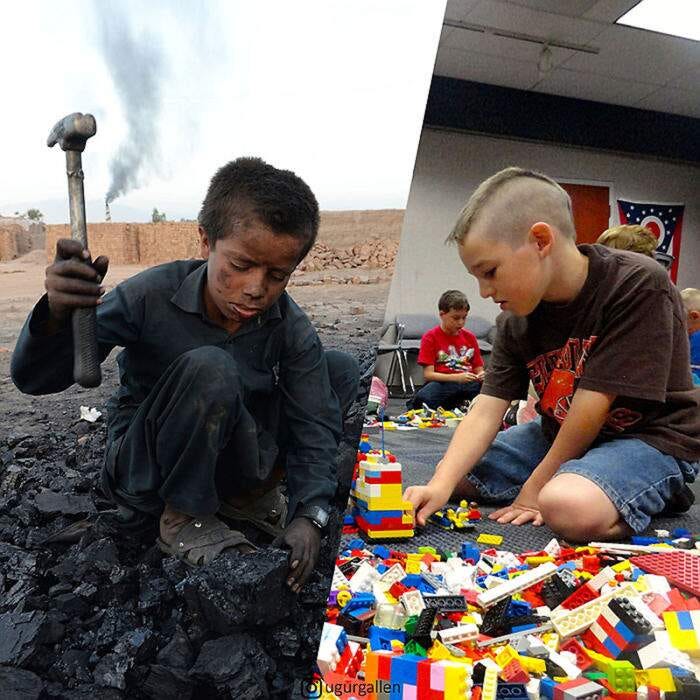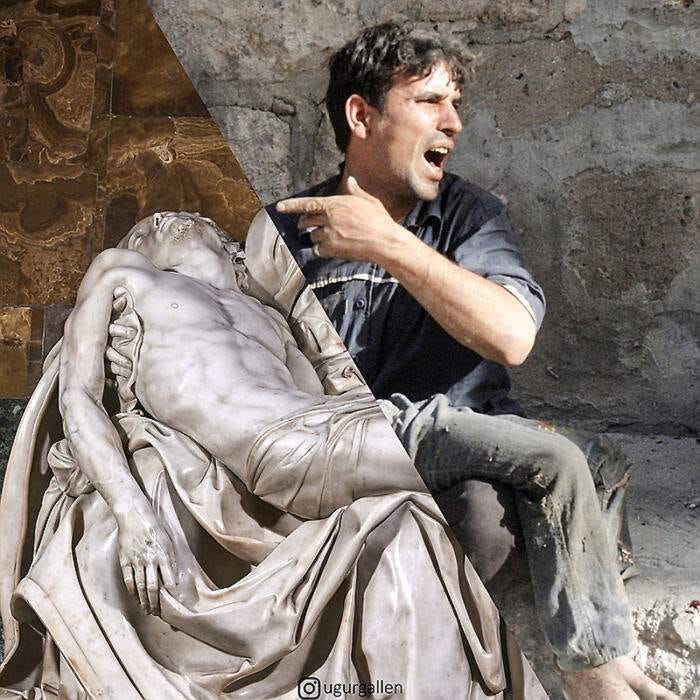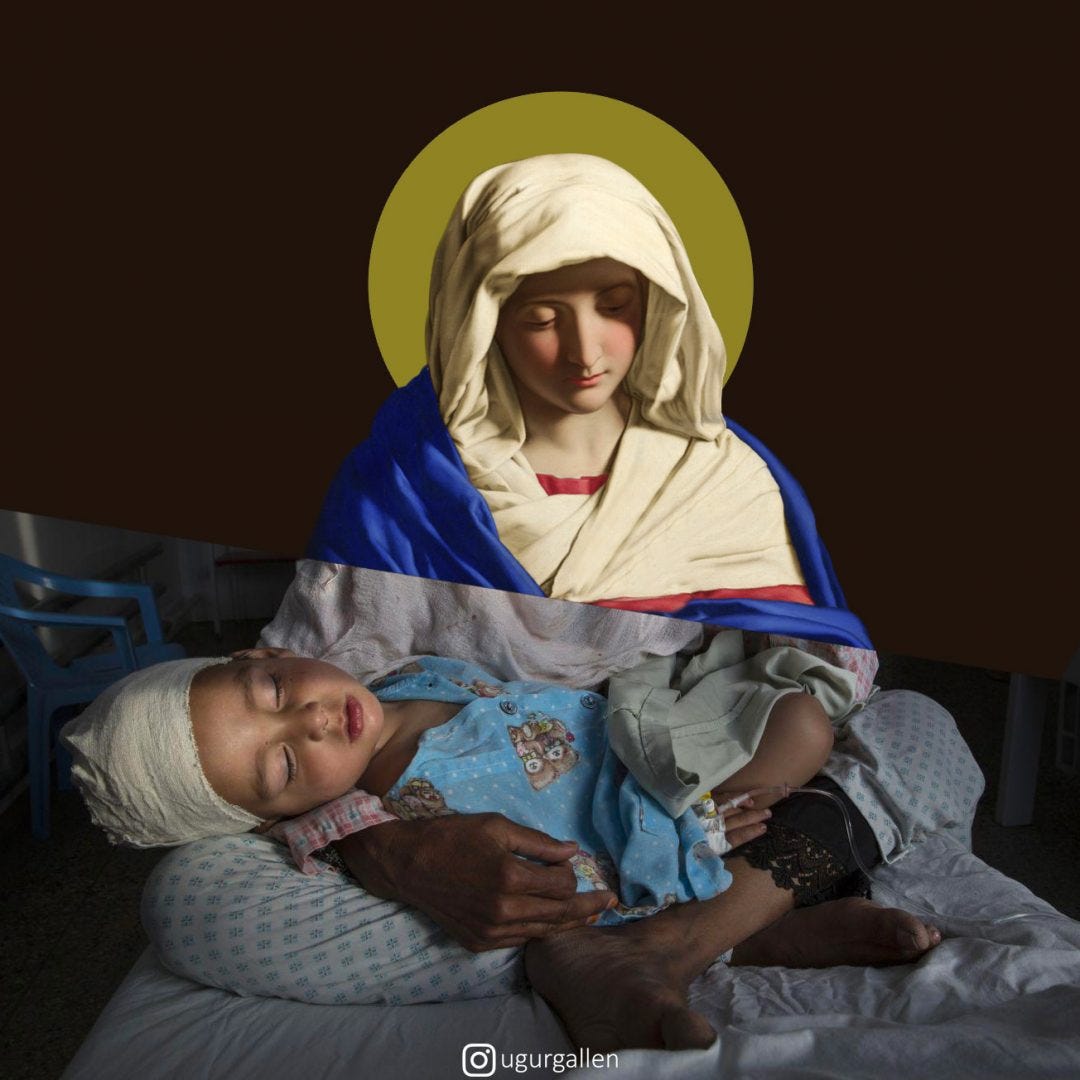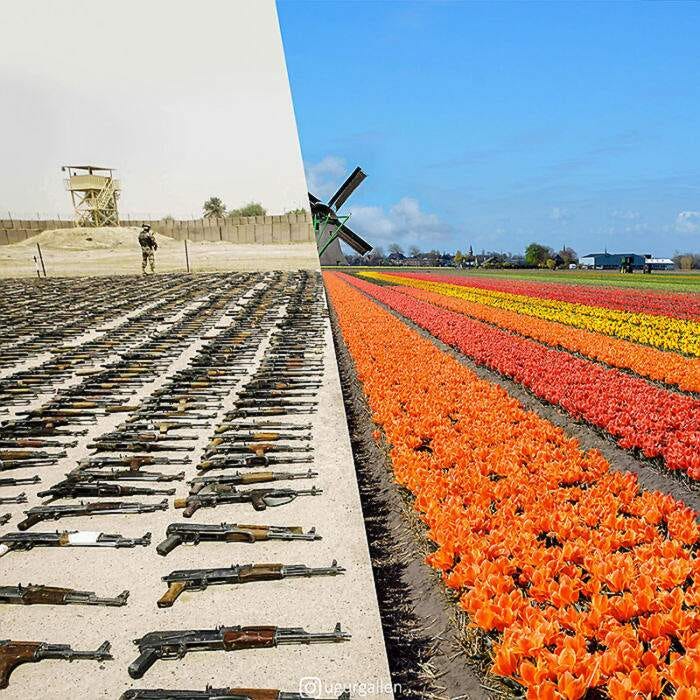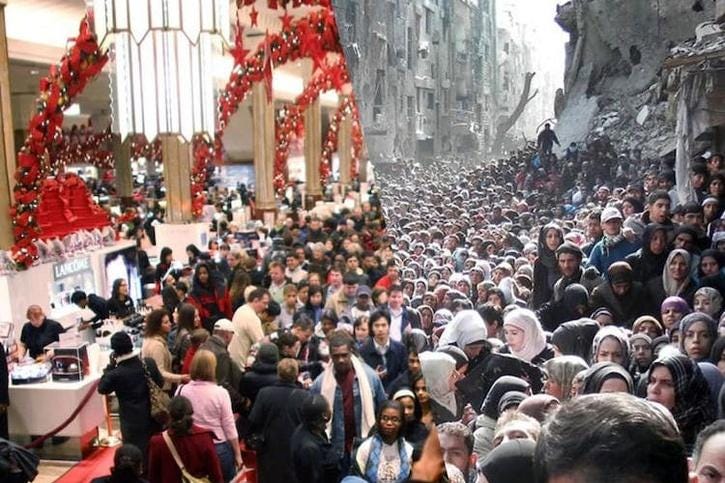THE PARALLEL UNIVERSES OF UĞUR GALLENKUŞ
What follows is my English translation of an article by Sonia Milone published on ComeDonChisciotte.org:
Peace and war, affluence and misery, wealth and despair, oppressors and oppressed, the West and the rest of the world: two universes placed there, side by side, clashing without any mediation, like a punch to the stomach, to represent the contrasts of a world split in two. These are the digital collages of Turkish artist Uğur Gallenkuş created by juxtaposing two images, one taken from the photography of reporters documenting the conditions of countries torn apart by conflict, while the other portrays our peaceful capitalist and consumerist societies. The result is a third, original image that, with rare visual force, erupts from this dichotomy, plunging us into this zone of fracture.
The aesthetic technique adopted is that of "dislocation" invented by Marcel Duchamp in 1917 and widely used by the artistic avant-gardes: by subtracting an object or an image from its accredited conceptual context, its perceptive habit is broken, producing an effect of estrangement, whereby the object reappears as if seen for the first time. The incongruous juxtaposition, the visual shock, serves Gallenkuş to awaken consciences by rediscovering the power of images and the power of photography to look deeply into reality, even if uncomfortable, beyond indifference.
For the Turkish artist, art is the master of all languages and helps to create awareness: “Many people know nothing about war, famine, etc.. Today you can live peacefully, but these tragedies still exist. If we want to live in peace and harmony, we must have sound knowledge and empathy. Wrong and biased information and hatred make these problems even worse”.
Self-taught, born in 1990 in Niğde, Turkey, a degree in Business Administration, his artistic journey began in 2015 when he saw the photo of a three-year-old Syrian boy, Aylan Kurdi, found dead on a Mediterranean beach. Since then, his work has focused on the growing global divide between the world of the privileged and the world of the exploited, two “Parallel Universes”, as he has called his own work.
“I started to see the fear and desperation in the eyes of refugee children trying to get to Europe. With my work, I would like to remind people in the more developed countries that there are people in the underdeveloped ones who live in terror, without food, in the midst of war. And I would also like to remind them that they deserve better governments, better education, better medical care, and have every right to live in peace and security just like their fellow human beings in more developed areas,” he said.
In his work, the main focus is on children, the innocent victims of all conflicts and injustice, and to them he dedicated the photo book “Parallel Universes of Children”, published on 20 November 2020, precisely on World Children's Day.
In order to communicate his message, Gallenkuş uses, above all, images representative of popular culture and the Western imagination (be they scenes from everyday life or iconic figures from fashion and the star system), on some occasions, however, he resorts to classical works of art such as Michelangelo's “La Pietà” or Jan Vermeer's “The Girl with the Pearl Earring”, resulting in very striking photomontages.
“My inspiration is life itself. the duality in which we live, the nature of human beings, greed, power, but also love and affection. With my works I aim to make people empathise with the problems that other human beings are going through in other parts of the world and that we cannot see because it does not happen to us”.
"I thought I should do something to raise awareness of these issues. And that is how I started my work by combining two photographs with a sharp line and called it Parallel Universes".
In 2022 he was awarded a prize by the Research Centre of Photography on the occasion of the thirty-sixth edition of “Friuli-Venezia Giulia Fotografia” and held his first exhibition in Italy in Spilimbergo. In 2023, he exhibited his works at the Schweitzer Centre in Kaysersberg, France, and in Geneva, Switzerland, where he realised a special project for Doctors Without Borders. He also exhibited his collages for the “Zero Gravity” project organised by Arts Help in Canada.
Gallenkuş lives and works in Istanbul and publishes his works on his website and on his Facebook and Instagram profile.
Uğur Gallenkus is also on Twitter.

